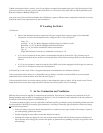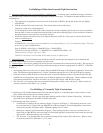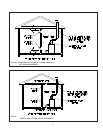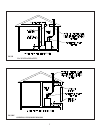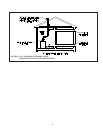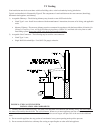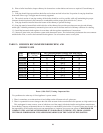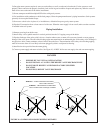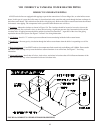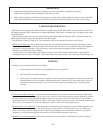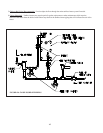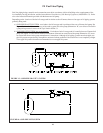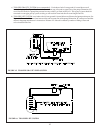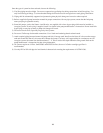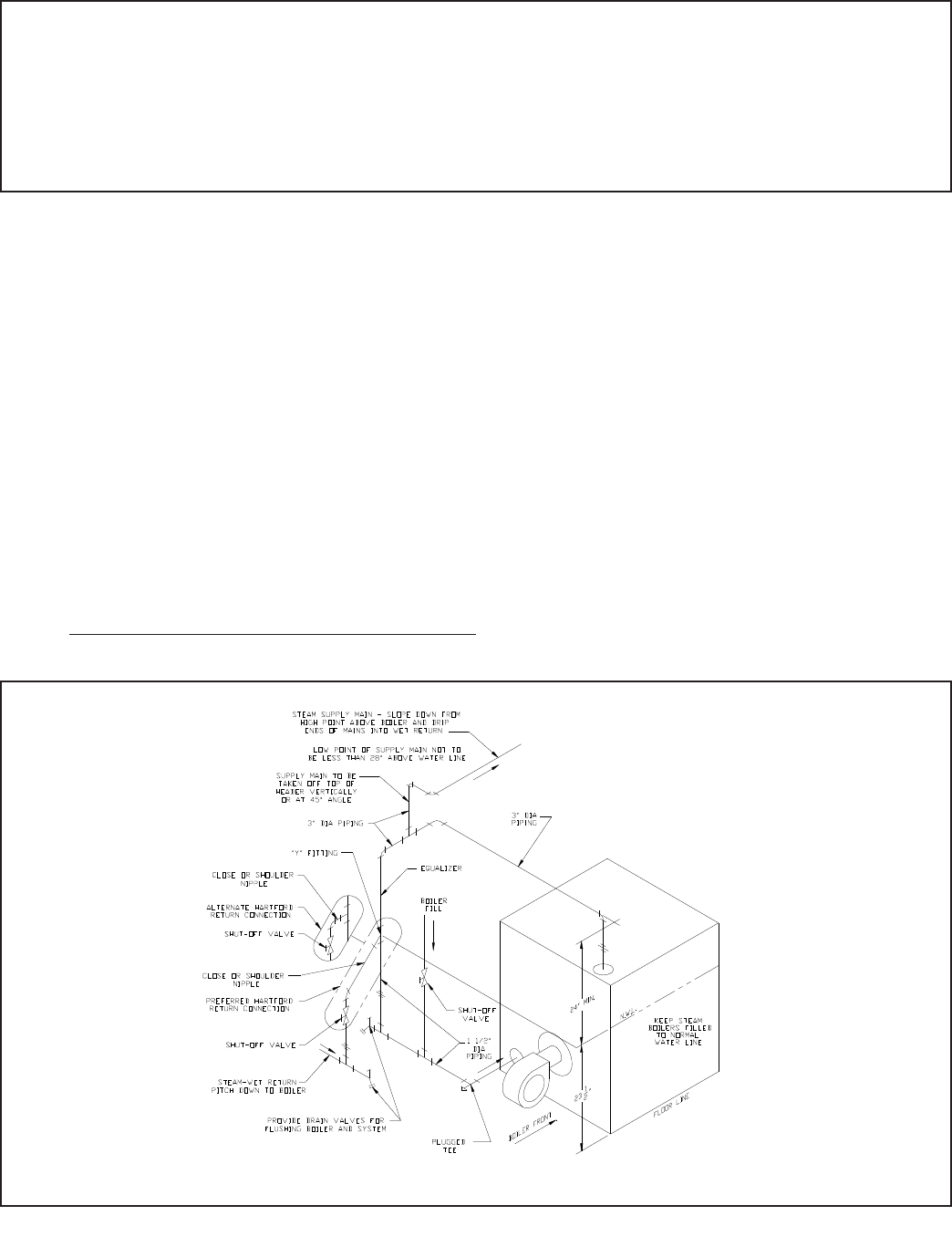
12
FIGURE 10: STEAM BOILER PIPING FOR GRAVITY RETURN
CAUTION
• INSTALL BOILER SO THAT ALL ELECTRICAL COMPONENTS ARE PROTECTED FROM WATER (DRIPPING,
SPRAYING, RAIN, ETC.) DURING APPLIANCE OPERATION AND SERVICE.
• OPERATION OF THIS BOILER IN A SYSTEM HAVING SIGNIFICANT AMOUNTS OF DISSOLVED OXYGEN
CAN CAUSE SEVERE HEAT EXCHANGER CORROSION DAMAGE.
Figure 10 shows recommended near boiler Piping for most common types of gravity return steam systems. Additional
information on steam system design may be found in Installation Guide for Residential Hydronic Heating Systems (Pub.
#200) published by the Hydronics Institute in Berkeley Heights, NJ.
One of the primary purposes of this near boiler piping is to separate tiny water droplets from the steam exiting the boiler so
that “dry” steam is sent to the system. If the near boiler piping is not correct, wet steam will enter the system and the following
problems may occur:
• Short cycling on low water
• Boiler or system Flooding
• Hammering
• Failure to heat one or more radiators
Avoid the common piping mistakes shown in Figure 11. This applies even if the existing boiler has one of the piping mistakes
shown in Figure 11 and appears to be working. If two or more steam mains must be connected to the boiler, connect a
separate take-off for each main into the header between the riser(s) and equalizer. Also note the following points:
1) A size reduction must be made to connect the header to the equalizer. This reduction must be made in the vertical equalizer
line. Do not make this size reduction in the horizontal header.
VII System Piping
11



